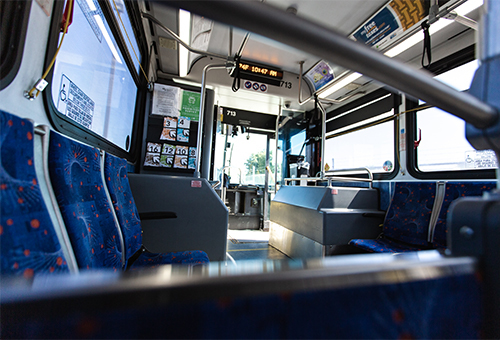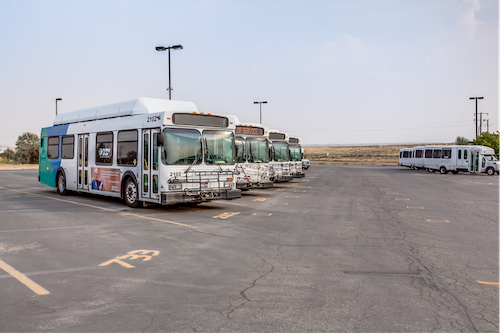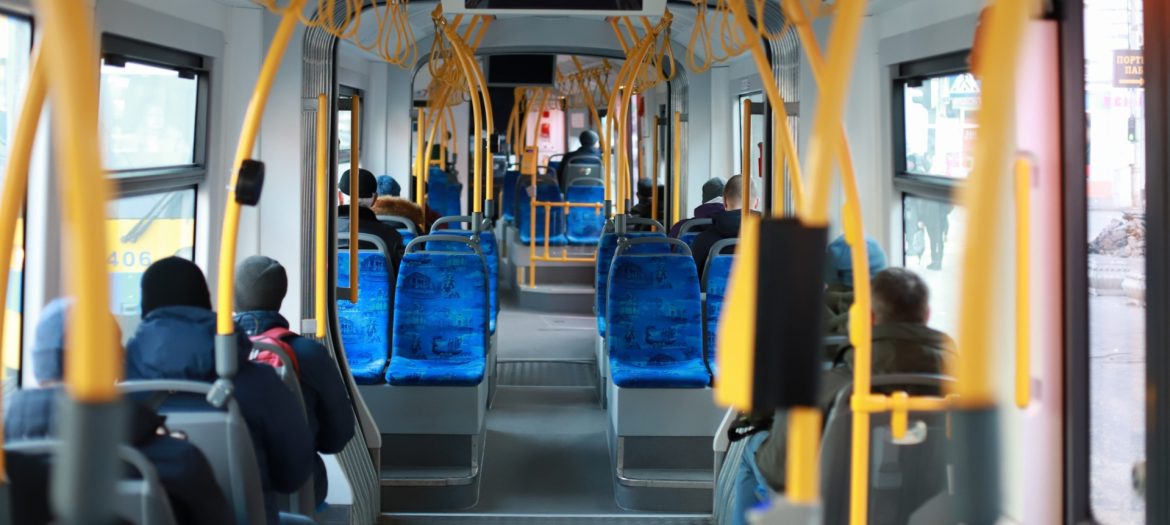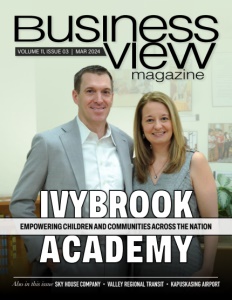Valley Regional Transit
Securing the Future of Public Transportation in Idaho
Transforming Idaho’s urban mobility landscape through innovative technology, strategic expansion, and community-focused initiatives.
Valley Regional Transit, the cornerstone of public transportation within Idaho’s most densely populated regions, operates with a mission to connect communities. Spanning two counties and incorporating the state’s major urban centers, this entity is a service provider and a lifeline facilitating mobility across urban and suburban landscapes. From Boise, the state’s largest city, to three other significant communities, Valley Regional Transit ensures accessibility and connectivity are within everyone’s reach.
At the helm of Valley Regional Transit, Elaine Clegg paints a vivid picture of an organization deeply entrenched in the community’s fabric. “We were established by a vote of the residents in these two populous counties, embodying the community’s trust and need for robust public transportation,” she explains. The system’s backbone, a fixed-route bus service, primarily serves Boise while branching out to other key locations. This network, comprising 22 routes with typically 39 buses in circulation, is poised for expansion, particularly in the western parts of the county, signifying a commitment to growth and enhanced service delivery.
Beyond the fixed-route services, Valley Regional Transit’s dedication to inclusivity shines through its paratransit offerings. Named ‘Access,’ this door-to-door service caters to individuals with disabilities, ensuring they are not left behind. Clegg elaborates on the evolution of services tailored for persons with disabilities and older adults, highlighting a shift from contracted operations to a more integrated, organization-led model. This transition aims to dismantle barriers, offering broader coverage and flexibility for its users.
Valley Regional Transit’s Technological Transformation

At a time when technology infiltrates every aspect of daily life, public transportation systems must integrate innovative solutions to enhance service delivery and passenger experience. Under CEO Clegg’s stewardship, Valley Regional Transit is at the forefront of this digital evolution. Clegg’s insights reveal an organization keenly focused on leveraging technology to streamline operations and elevate the user journey, setting a benchmark for public transit systems nationwide.
“Each of our buses is equipped with Wi-Fi and a tablet for driver communication, alongside traditional radio systems. This setup underpins our real-time GTFS system, enabling bus tracking through a GIS system,” she elaborates. This technology allows passengers to view the real-time location of their bus via an app, revolutionizing how riders plan their journeys by providing up-to-the-minute updates on bus arrivals and departures.
Introducing an app-based wallet system represents another stride towards modernizing fare collection. Riders can preload funds, pay for rides, and even cover parking fees, all from their smartphones. “Upon boarding, passengers can simply scan their phones against electronic validators,” Clegg explains, showcasing the seamless integration of technology into the fare payment process. This system, coupled with infrared passenger counters, automates the tracking of boarding and alighting, offering valuable data to optimize service routes and schedules.
Addressing the needs of less technologically adept passengers, Clegg emphasizes the organization’s commitment to accessibility. “We maintain a robust customer service operation, capable of assisting passengers in person, over the phone, or at our facilities,” she notes. This ensures that all riders, regardless of their comfort with technology, can access information, purchase fares, and receive support when needed.
As Valley Regional Transit contemplates the future of fare collection, including the potential continuation of cash payments onboard, Clegg underscores the balance between technological advancement and accessibility. Pursuing a more technologically advanced fare collection system, possibly integrating mobile payment platforms like Google Pay or Apple Pay, reflects the organization’s forward-thinking ethos. “The new world of fare collection is evolving rapidly, presenting both challenges and opportunities for public transit systems,” Clegg says, hinting at the possible future of public transportation in the digital age.
Valley Regional Transit’s Green Initiatives
Environmental considerations are currently front and center across industries, and public transit systems globally are under pressure to adopt sustainable practices. Valley Regional Transit is no exception, undertaking significant capital upgrades to enhance operational efficiency and reduce its carbon footprint. CEO Clegg outlines an ambitious agenda for the organization, from fleet electrification to developing high-amenity bus stops.
“We have installed 12 chargers and 18 dispensers at our bus depot maintenance facility, with the infrastructure to support an expansion to 18 chargers and 36 charging stations,” she shares. This development paves the way for electrifying nearly the entire fleet in Ada County, marking a pivotal shift towards green energy utilization within the organization’s operational framework.
The commitment to enhancing rider experience while adhering to environmental standards is evident in the upgrades to the downtown Boise underground station. “We are installing on-route chargers to support our electric buses on longer routes,” Clegg explains. This initiative ensures that electric buses can operate throughout the day without the risk of depleting their charge, a testament to the organization’s innovative approach to sustainable transit solutions.
Capital improvements extend beyond electrification, with Clegg detailing investments in bus stop amenities and facility upgrades. A grant facilitates the transformation of the State Street #9 route into a rapid transit light model featuring high-frequency service complemented by high-amenity bus stops and improved pedestrian and bicycle infrastructure. Such enhancements not only improve service delivery but also encourage greater use of public transit, contributing to a reduction in the community’s carbon footprint.
Facility upgrades across both Ada and Canyon Counties reflect a comprehensive approach to sustainability and operational efficiency. These projects are crucial for supporting the transit system’s expanding capabilities, from repaving bus depots to modernizing administrative and maintenance buildings. The organization’s focus on paving underscores the importance of durable infrastructure to withstand the rigors of daily bus operations, ensuring longevity and efficiency.
In Canyon County, Clegg is exploring an innovative approach to sustainability through the potential use of renewable natural gas (RNG) derived from dairy waste. “Canyon County is a major dairy-producing region, and converting methane from dairy waste into RNG presents a unique opportunity for sustainable bus fuel,” she notes. This exploration into RNG represents a significant potential win for environmental sustainability while offering economic advantages.

Challenging Perceptions and Promoting Public Transit
Personal vehicle ownership remains robust in many cities, leaving public transit systems grappling with misconceptions about their value and efficiency. Under Clegg’s leadership, Valley Regional Transit is embarking on a multifaceted journey to reshape the narrative around public transportation.
She reflects on the importance of communication in altering public perceptions. “Upon my arrival, we intensified our efforts to articulate the benefits of public transit, securing considerable media coverage and engaging directly with the community through events,” she reveals. This proactive approach has not only elevated the discourse around public transportation but has also fostered a deeper connection with the community Valley Regional Transit serves.
Launching a comprehensive bus network redesign became a pivotal moment for community engagement, drawing over 4,000 responses from the public. “The feedback was unequivocally in favor of enhancing the system’s viability through increased frequency and extended service hours,” Clegg notes, underscoring the public’s appetite for a more robust transit service. Support also surged for improvements to stop amenities and the overall experience onboard, highlighting the community’s recognition of public transit’s potential to elevate the quality of urban life.
In exploring the possibility of a regional rail system, Valley Regional Transit tapped into public enthusiasm for innovative transit solutions. “We received overwhelming support to investigate this option further, reflecting a collective vision for a more connected and accessible region,” Clegg adds. This exploration signifies a bold step towards redefining mobility in the area, emphasizing the role of public transit in shaping future transportation networks.
Clegg also unveils plans for an information-centric campaign rich in insights about the economic and lifestyle benefits of public transit. “Transit is a critical tool in mitigating congestion and living costs, particularly in fast-growing regions where housing affordability is a concern,” she explains. The forthcoming campaign, dubbed “Let us do the driving,” encapsulates the organization’s message of convenience and safety, inviting residents to reconsider their daily commute and the benefits of entrusting their journey to public transit.
Valley Regional Transit’s Roadmap for Growth
As Valley Regional Transit embarks on a transformative journey, the focus is on an ambitious system redesign to enhance service efficiency and ridership significantly. This strategic pivot is about immediate improvements and sets the stage for a broader conversation on sustainable growth and the pursuit of additional resources to fulfill the region’s evolving transportation needs.
CEO Clegg is optimistic about the immediate impact of the system redesign, anticipating a 20% surge in ridership. “We’re shifting our focus from an 80% coverage and 20% frequency model to a 70-30 split. It’s a substantial change to enhance service frequency and overall user experience,” she outlines. This adjustment reflects a strategic response to user feedback and market analysis, underscoring Valley Regional Transit’s commitment to adapting its services to meet and exceed community expectations.
Looking beyond the immediate horizon, Clegg acknowledges the challenges of securing stable funding and state support in a rapidly growing region. “The critical task for 2024 is to initiate discussions on expanding our resources,” she states. This involves a dual approach: implementing the new system redesign while embarking on a comprehensive update of planning documents.
The objective is to craft a narrative that vividly illustrates the potential improvements and impacts on residents’ lives if additional resources were available. “We aim to move away from abstract, high-level concepts and instead tell compelling stories that resonate with our audience,” she explains. This approach is designed to foster a deeper understanding among residents and stakeholders of the tangible benefits that enhanced funding could unlock, from expanded services to more efficient routes, ultimately leading to a more connected and accessible community.
As Valley Regional Transit prepares to roll out these changes, the emphasis is also on ensuring that the community is well-informed and equipped to navigate the new system. “Our goal is to not only introduce these enhancements but to guide our riders through the transition, making the process as seamless as possible,” Clegg adds.
Through strategic planning, community engagement, and a clear vision for the future, Valley Regional Transit is poised to lead the region into a new era of public transportation. Under Clegg’s leadership, the organization is not just responding to immediate needs but is actively shaping the future of mobility in the region, driving towards a system that not only.
AT A GLANCE
Valley Regional Transit
What: The primary public transportation service provider for Idaho’s most urbanized areas, focusing on innovative solutions for sustainable and efficient transit.
Where: Serving Idaho’s two most populous counties, including the Boise metropolitan area.
PREFERRED VENDORS
Jacobs – www.jacobs.com
Jacobs is proud to partner with VRT in delivering innovative transit solutions. From facility master planning, battery electric bus planning, bus rapid transit infrastructure planning and fleet electrification design and implementation, we are helping VRT expand their capacity to serve the growing Treasure Valley.
Transpo Group – www.transpogroup.com
At Transpo, we plan and design transportation systems for people — not just drivers of cars and trucks, but also the pedestrians, cyclists and transit riders who share these systems. We create transportation solutions that enable a more sustainable tomorrow for communities of all sizes.




